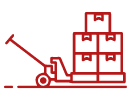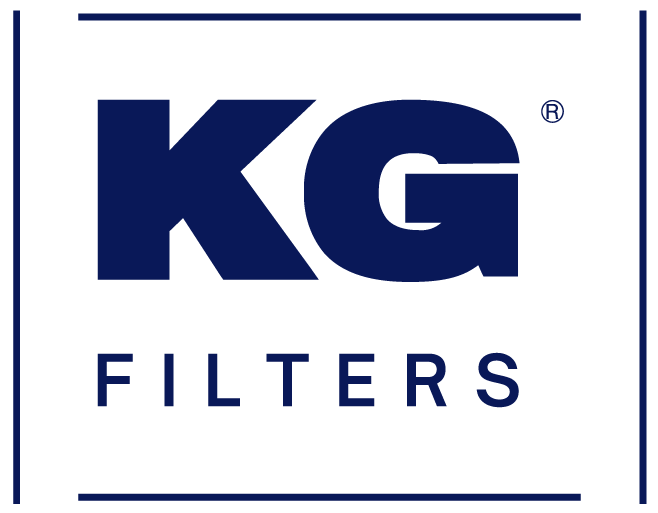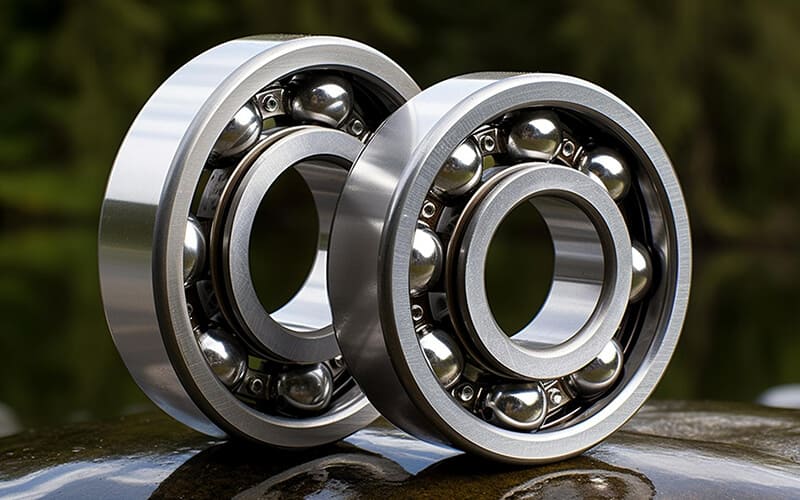Ball bearings are fundamental components in the mechanical sector, serving as the backbone for countless devices and systems. These compact yet formidable components boost the performance and longevity of machinery by effectively minimizing friction among moving parts. They facilitate both rotational and linear motions, playing a significant role in supporting the stability and operational efficiency of machines.
What Are Ball Bearings?
These bearings are ingeniously simple yet exceptionally effective mechanical components essential to modern machinery. These devices consist of spherical balls between two concentric rings, known as races. The design of these proven bearings is such that the outer race is securely positioned within the machine’s housing, ensuring stability. In contrast, the inner race is directly connected to the moving shaft, facilitating motion. This strategic arrangement minimizes the contact area between the moving parts, significantly reducing friction. As the balls roll, they distribute the load across a broader area, mitigating stress and enhancing the operational efficiency of the machinery. This distribution aids in the seamless rotation of shafts and axles and is vital in prolonging the service life of the machinery. The precise engineering behind ball-bearing allows for a seamless interface between stationary and moving parts, exemplifying the elegance and efficiency of mechanical design.
Types of Ball Bearings
A wide variety of bearings exist, each designed to fulfil distinct needs and uses:

Deep Groove Ball-Bearings: These are versatile and widely used bearings, capable of effectively handling radial and axial loads. Their deep groove design enables them to accommodate higher loads, making them suitable for various applications.
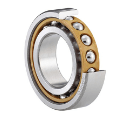
Angular Contact Ball-Bearings: These are engineered to handle radial and axial loads together, making them suitable for high-precision and stiffness applications like machine tool spindles.
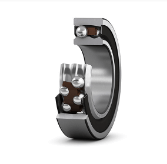
Self-Aligning Ball-Bearings: Equipped with two rows of balls and a spherical raceway in the outer ring, these bearings can adjust to shaft misalignment with the housing, making them perfect for situations where the shaft is likely to be misaligned.
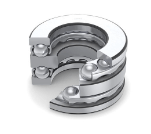
Thrust Ball-Bearings: Explicitly designed to handle axial loads, thrust ball-bearings are used in applications with a predominant axial load, such as in the automotive and aerospace industries.
The Role of Ball Bearings
The role of these bearings in the machinery world is indeed complex and critical. These crucial elements are cleverly crafted to reduce friction and adeptly handle loads, thus playing a vital role in increasing the durability and efficiency of machines. By diminishing friction, these bearings significantly decrease the wear and tear on moving components, aiding in energy savings, and prolonging the life of the equipment. This efficiency is beneficial in operational cost savings and enhances reliability and performance over time. Furthermore, the smooth and efficient movement ensured by ball-bearings is vital for the operational excellence of machinery, directly influencing productivity and reducing the likelihood of costly downtime. Effective bearing performance is thus a cornerstone of maintaining the overall health and efficiency of mechanical systems, highlighting the indispensable role ball-bearings play in a wide array of industrial and mechanical applications.
Importance of Ball Bearings
The importance of these bearings is immense, as they are essential elements in numerous industries, crucially contributing to the progression of contemporary technology. Their applications range from the precision required in aerospace engineering to the durability demanded in automotive systems, from the sensitivity of electronic devices to the robustness essential in heavy industrial machinery. These bearings facilitate the smooth operation of mechanisms, enabling them to function with less friction, reducing wear and increasing the lifespan of the equipment. This reduction in friction is crucial for enhancing the performance and reliability of machinery and plays a significant role in promoting energy efficiency. By minimizing the energy lost through friction, these bearings contribute to the more sustainable operation of machinery, underscoring their contribution to individual industries and broader efforts in energy conservation and environmental protection.
Surprising Facts About Ball Bearings
- Variety in Size: The diversity in ball-bearing sizes caters to a wide range of applications, with different series bearing being a common choice due to its optimal size and utility.
- Material Diversity: The choice of material, be it steel, ceramic, or plastic, is determined by the specific requirements of the application, including load capacity, speed, and environmental conditions.
- Application Versatility: The utility of these proven bearings extends beyond just reducing friction, they are pivotal in enhancing the lifespan and efficiency of rotating components in various machinery.
- Design Options: The distinction between open and sealed ball-bearings highlights the adaptability of these bearings to different operational needs, with sealed bearings offering protection against contaminants and open bearings facilitating lubrication.
- Environmental Resilience: Certain ball bearings are engineered to thrive in extreme conditions, showcasing their adaptability to high temperatures and corrosive environments.
Maintenance Tips for Ball-Bearings
- Regular Lubrication: Consistent lubrication mitigates wear and safeguards the bearing from premature failure.
- Monitoring and Inspection: Active monitoring facilitates the prompt identification of wear or damage, allowing for swift corrective action.
- Proper Handling and Storage: Adequate handling and storage conditions prevent unnecessary damage and ensure the bearings maintain their integrity and performance.
Conclusion
Ball bearings enable the machinery to achieve its full potential in terms of efficiency, reliability, and longevity. KG International is at the forefront of providing high-quality bearings, catering to industrial needs with expertise and dedication. They are committed to ensuring machinery operates at its zenith, supported by our quality bearings and comprehensive support.
Explore the offerings at www.kginternational.com and discover how ball bearings can transform the operational efficiency of your machinery, contributing to a more productive and reliable industrial environment.






